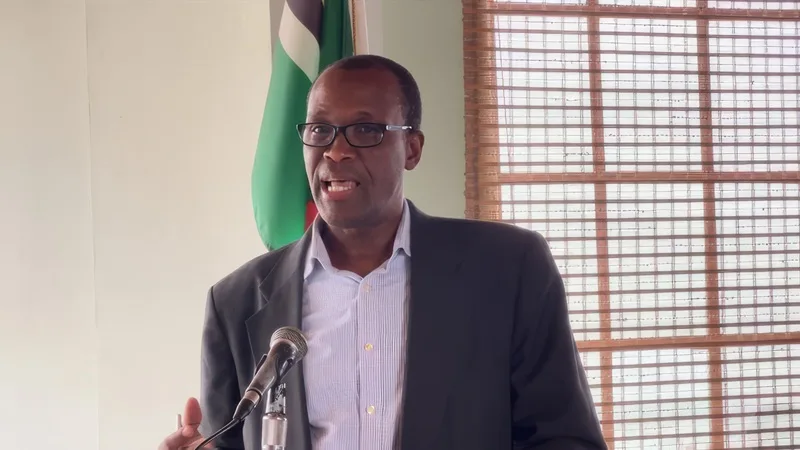St. Joseph Constituency

The St. Joseph Constituency is a central-western electoral district in the Commonwealth of Dominica. Known for its coastal access, riverine ecosystems, and upland farming villages, it is strategically and culturally crucial within the island’s electoral framework. Politically active since independence, the constituency has experienced shifting electoral allegiances and evolving development priorities, anchored in its unique blend of inland and coastal communities.
Geographic and Community of St. Joseph Constituency
Situated along Dominica’s west coast, the St. Joseph Constituency stretches from coastal areas on the Caribbean Sea to highland settlements toward the island’s interior. It encompasses a cross-section of terrain that includes beaches, valleys, and agricultural slopes, shaped in part by the powerful Layou River, Dominica’s largest and most significant river system.
It includes the communities of St. Joseph, Layou, Mero and Belles, forming a corridor between Tarreau in the south and Salisbury to the north. The constituency benefits from a central location along the Edward Oliver Leblanc Highway, which links Dominica’s two largest urban centers: Roseau and Portsmouth.
Constituency Boundaries
- North: Borders the Salisbury Constituency, near the Macoucherie River and coastal forest zones.
- East: Extends inland to meet the highland edges of the Castle Bruce Constituency.
- South: Shares a boundary with the Mahaut Constituency, intersecting forested areas and road networks around Belles.
- West: Faces the Caribbean Sea, with river outlets and beaches in Layou, Mero, and St. Joseph.
The area is characterized by fertile volcanic soils, which support farming, and a strong fishing tradition along its coast. The Layou Valley and Belles Plateau offer opportunities for eco-tourism, farming expansion, and hydrological conservation projects.
Political Representation
The St. Joseph Constituency has been an active electoral district since Dominica’s independence in 1978, represented by several prominent figures in the House of Assembly. The following is a chronological overview of parliamentary representation:
- 1975–1980: I.A. Thomas – Dominica Labour Party
- 1980–1985: Kelleb John Laurent – Dominica Freedom Party
- 1985–1990: Patrick Roland John – Dominica Labour Party
- 1990–2000: Doreen Paul – United Workers Party
- 2000–2009: Vince Henderson – Dominica Labour Party
- 2009–2019: Kelver Darroux – Dominica Labour Party
- 2019–2022: Adis King – Dominica Labour Party
- 2022–Present: Darron T. Lloyd – Dominica Labour Party
The current Member of Parliament, Darron Lloyd, was elected in the 2022 general election. He has prioritised youth development, improved access to ICT in rural schools, and strengthened disaster resilience, particularly in Layou and Belles. The constituency has seen strong voter turnout in general elections, ranging from 65% to 78%, often reflecting national political trends. Campaigns typically focus on rural development, access to housing, youth employment, and agricultural incentives.
Development, Governance and Infrastructure
A network of public services, local institutions, and government-backed infrastructure supports development in the St. Joseph Constituency. The St. Joseph Village Council is key in organising community cleanups, managing disaster preparedness, maintaining public spaces, and overseeing small-scale infrastructure improvements. It also acts as a liaison between residents and national agencies, addressing local needs.
The St. Joseph Police Station oversees public safety, manages law enforcement and coordinates emergency response alongside the Office of Disaster Management (ODM) and village disaster committees. Given the constituency’s vulnerability to flooding and landslides, this coordination is especially vital during adverse weather events.
Healthcare services are delivered primarily through the St. Joseph Health Centre, which provides outpatient care, immunizations, and chronic disease management. Upgraded under the Primary Healthcare Enhancement Programme, the centre has improved infrastructure and services. The Justin Fadipe Medical Centre, a private facility, supplements public healthcare with diagnostics and treatment.
Education is supported by institutions including St. Joseph Primary School, Belles Primary School, Layou Pre-School, and Isaiah Thomas Secondary School. Since 2018, these schools have benefited from upgrades in classroom infrastructure and internet access. Many also serve as emergency shelters during storms.
Utilities are provided by DOMLEC, DOWASCO, and private telecom companies. The West Coast Water Supply Project has improved water reliability in villages such as Layou and St. Joseph. Electricity and mobile coverage now reach all major communities in the constituency.
In response to damage from past storms, bridge reconstruction and slope stabilization projects have been undertaken, improving road access and safety. These works are especially critical in upland areas with steep terrain.
Community and recreational facilities include the St. Joseph Basketball Court, St. Joseph Playing Field, and the Saint Joseph Post Office. The Hillsborough Gardens Housing Scheme provides modern housing for families in need of safe, affordable shelter.
Religious institutions such as the Saint Joseph Catholic Church, Greater Cornerstone Baptist Church, and the St. Joseph Seventh-day Adventist Church serve not only as places of worship but also as centers for social support and community engagement.
Together, these public institutions and services help maintain a functioning, connected, and increasingly resilient constituency responsive to the evolving needs of its residents.
Economic Activities and Cultural Identity
St. Joseph Constituency maintains a dual economy driven by agriculture and coastal livelihoods. Farmers in Belles and Layou focus on ground provisions, ginger, citrus fruits, and short-cycle crops. Farm access roads have made it easier to transport produce to the Roseau Market, while extension officers offer training in sustainable land use and climate-smart farming.
Fishing thrives in Layou, Mero, and St. Joseph, supported by traditional pirogues and small fiberglass boats. Catches such as snapper and kingfish are sold locally or to Roseau vendors. Discussions on a new fish landing site in Layou have surfaced in recent years, along with calls for better ice storage and fish processing spaces.
Tourism is growing slowly. Mero’s calm waters and sandy beaches draw both locals and returnees. Layou River’s popularity for river tubing and hiking has led to small investments in tour guides and guesthouses. Villages are also exploring agro-tourism and heritage trails.
Culturally, the area is steeped in Catholic rituals, particularly the annual Feast of St. Joseph, where church services are followed by communal meals and traditional music. Storytelling, creole drumming, and village pageants remain popular, often blending African, Kalinago, and European influences. Local artisans work in wood carving, weaving, and herbal remedies.
These traditions are sustained through village councils, cultural groups, and support from the Division of Culture, which helps organize workshops, inter-village events, and festival participation.




